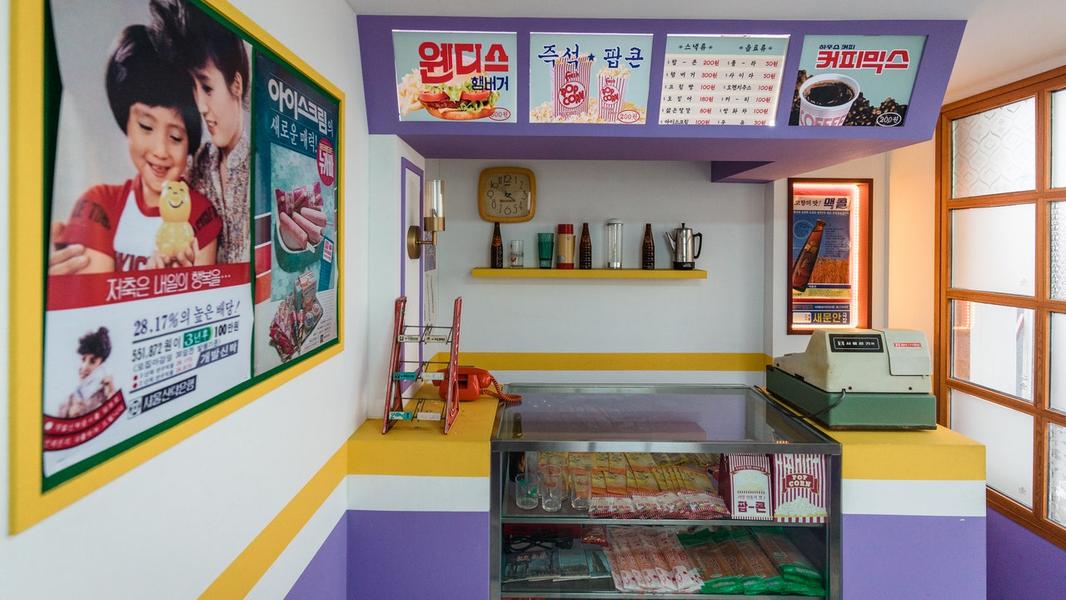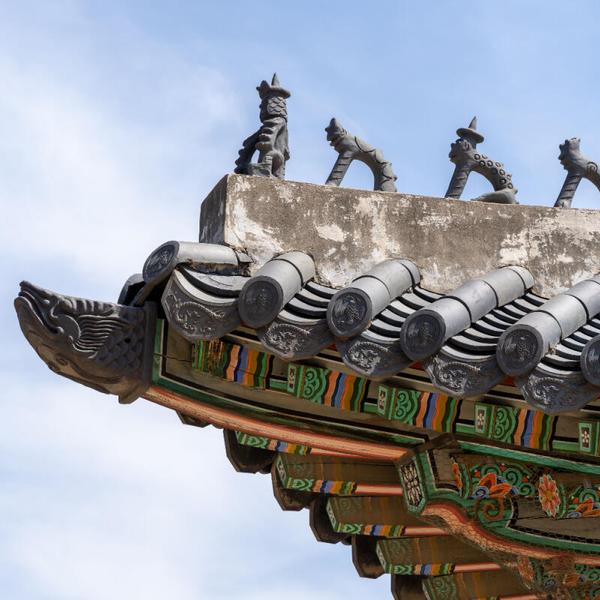How has South Korea’s culture industry risen to global prominence?
South Korea’s culture industry has risen to global prominence through a combination of factors. Firstly, the rise of K-pop and K-dramas has played a significant role in spreading Korean culture worldwide. With their catchy music and captivating storylines, K-pop groups like BTS and Blackpink have gained a massive following not only in Asia but also in Western countries. K-dramas, on the other hand, have become incredibly popular on streaming platforms like Netflix, introducing viewers to the unique storytelling and vibrant characters of Korean television. This global popularity has led to an increase in interest in other aspects of Korean culture, such as fashion, beauty, and food.\n\nSecondly, South Korea has actively invested in promoting its culture on a global scale. The government has supported the establishment of cultural centers and events like KCON, which bring together fans of Korean culture from all over the world. Additionally, the Korean Wave, or Hallyu, has been strategically promoted through initiatives like the Korean Cultural Center and the Korea Tourism Organization. These efforts have helped raise awareness and generate interest in Korean culture, contributing to its global prominence.\n\nLastly, the internet and social media have played a crucial role in the rise of South Korea’s culture industry. Platforms like YouTube have allowed K-pop groups to connect with fans directly, creating a global fanbase. Social media platforms like Twitter and Instagram have enabled fans to share their love for Korean culture, further spreading its influence. The accessibility of Korean music, dramas, and other cultural content online has made it easier than ever for people around the world to engage with and appreciate South Korean culture.
What are some traditional Korean delicacies that can be enjoyed in Seoul?
Seoul is a paradise for food enthusiasts, and there are several traditional Korean delicacies that can be enjoyed in the city. One must-try dish is the iconic bibimbap, which consists of a bowl of steamed rice topped with colorful and delicious ingredients such as sautéed vegetables, seasoned meat, soybean sprouts, and a fried egg. The dish is usually served with a spicy gochujang sauce that adds a kick of flavor. Bibimbap is not only a delight for the taste buds but also a visual treat as the ingredients are artfully arranged in the bowl.\n\nAnother traditional delicacy to try in Seoul is kimchi. Kimchi is a staple in Korean cuisine and is made by fermenting cabbage or radishes with a combination of spices, such as chili powder, garlic, and ginger. It is a versatile side dish that can be enjoyed on its own or used as an ingredient in various dishes. The tangy and spicy flavor of kimchi is a perfect complement to any meal.\n\nFor those with a love for street food, tteokbokki is a must-try. Tteokbokki is a popular street snack made from chewy rice cakes cooked in a spicy sauce. It is often combined with fish cakes, boiled eggs, or vegetables for added flavor and texture. The combination of the soft rice cakes and the spicy sauce creates a delicious and satisfying dish.\n\nThese are just a few examples of the many traditional Korean delicacies that can be enjoyed in Seoul. The city is a food lover’s paradise, offering a wide range of flavors and dishes to tantalize your taste buds.
What are some other historical sites in Seoul worth visiting?
Seoul is a city rich in history, and apart from the Donuimun Museum Village, there are several other historical sites worth visiting. One such site is Gyeongbokgung Palace, the grandest of the city’s great palaces. Built in the 14th century, Gyeongbokgung Palace served as the main royal palace during the Joseon Dynasty. It is known for its stunning architecture, including the famous Geunjeongjeon Hall, where ceremonies and official events were held. Visitors can also witness the changing of the guard ceremony, a traditional ritual that takes place multiple times a day.\n\nAnother historical site not to be missed is Changdeokgung Palace, a UNESCO World Heritage site. Known for its beautiful gardens and architecture, Changdeokgung was a favored residence of many Joseon kings. The palace is famous for its “Secret Garden,” a vast landscaped garden that was used for leisure and retreat.\n\nBukchon Hanok Village is another historical gem in Seoul. This traditional neighborhood is lined with well-preserved hanok (traditional Korean houses) that date back to the Joseon Dynasty. Walking through the narrow alleyways, visitors can get a glimpse of what life was like in ancient Seoul. Some hanoks have been converted into cafes, shops, and guesthouses, offering a unique experience in a historic setting.\n\nThese are just a few examples of the many historical sites in Seoul. The city is a blend of old and new, offering a fascinating glimpse into the rich history and culture of South Korea.
Full summary
Seoul, the vibrant capital of South Korea, is a city that beautifully blends tradition and modernity. From ancient palaces to traditional villages, Seoul offers a plethora of historical sites that tell the fascinating story of this remarkable peninsula. Let's embark on a journey through time and explore the rich history and culture of Seoul.
The Donuimun Museum Village
Our exploration begins at the Donuimun Museum Village, a hidden gem that takes visitors on a captivating journey through Seoul's history and culture from the 1890s to the 1990s. This unique museum, named after the old western gate of the Seoul Fortress Wall, showcases traditional hanoks and more modern structures that have been meticulously preserved to create a living time capsule of Seoul's past.
Visiting the village is like stepping into a different era. You can wander through the traditional hanoks, admiring their intricate architecture and learning about the daily lives of Seoulites in the past. The museum also offers various cultural activities, such as Hangul calligraphy and the outdoor game jegichagi, giving visitors a hands-on experience of traditional Korean culture.
The Rise of South Korea's Culture Industry
One of the highlights of the Donuimun Museum Village is an exhibit that explores the postwar rise of South Korea's culture industry. From music to film, fashion to beauty, South Korea has experienced a cultural wave that has captivated audiences around the world. The exhibit showcases the evolution of Korean entertainment and provides insights into the factors that have contributed to its global success.
Traditional Korean Cuisine
No exploration of Seoul's culture is complete without indulging in its delectable cuisine. At the Snack Bar for School in the Donuimun Museum Village, you can savor traditional Korean delicacies that have been enjoyed for generations. From the rich flavors of bibimbap to the satisfying crunch of kimchi, each dish tells a story and reflects the culinary heritage of the region.
Exploring More Historical Sites
While the Donuimun Museum Village is a must-visit, there are many other historical sites in Seoul that deserve attention. Gyeongbokgung Palace, the oldest and largest of the city's great palaces, is a symbolic landmark that offers a glimpse into the grandeur of the Joseon Dynasty. Changdeokgung Palace, another of Seoul's five great palaces, is known for its beautiful gardens and was a favorite residence of many Joseon kings.
Bukchon Hanok Village is a well-preserved historic neighborhood nestled between Gyeongbokgung and Changdeokgung palaces. With its winding alleyways and traditional hanoks, this village provides a charming glimpse into Seoul's past.
Immerse Yourself in Seoul's History and Culture
Seoul truly offers a treasure trove of historical and cultural experiences. Whether you're exploring ancient palaces or participating in traditional games, each encounter is an opportunity to appreciate the rich heritage of this vibrant city.
As you journey through time, make sure to have your Go City Seoul Explorer or All-Inclusive Pass handy. With these passes, you can save on dozens of attractions and make the most of your visit to Seoul. Embrace the past, embrace the present, and let Seoul's history and culture captivate your senses and expand your horizons.










